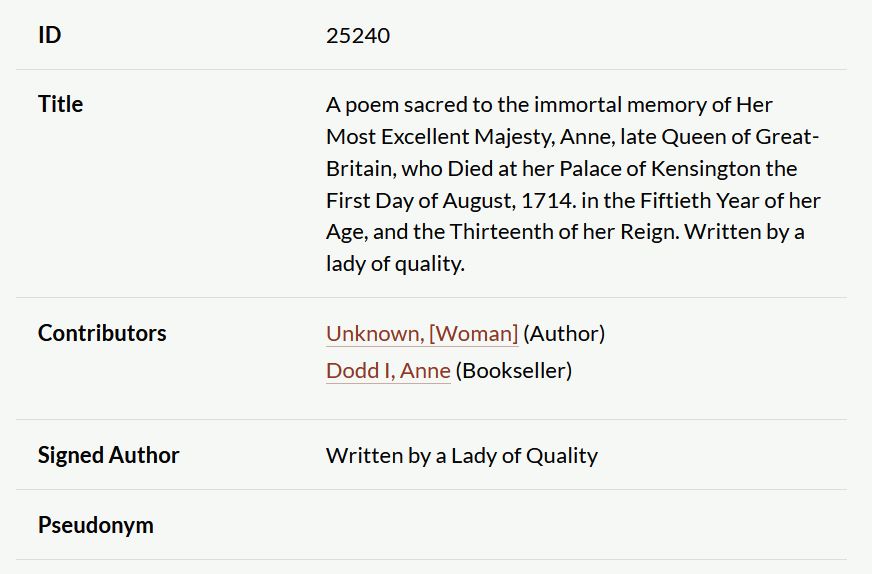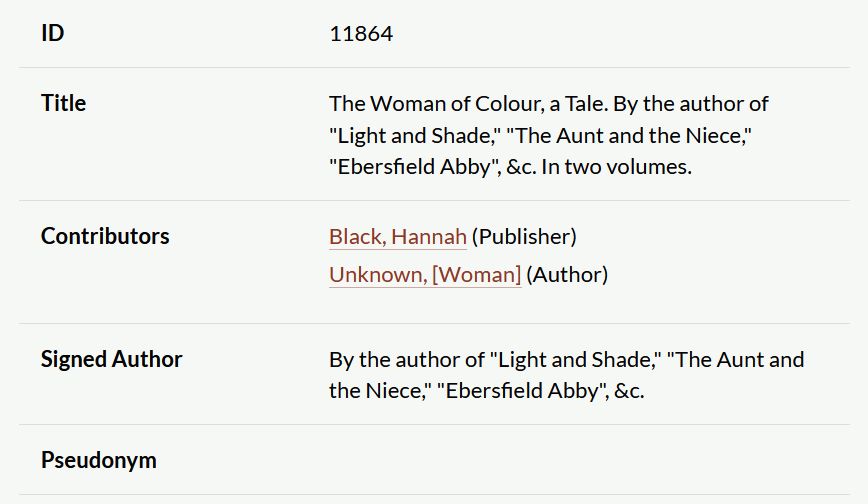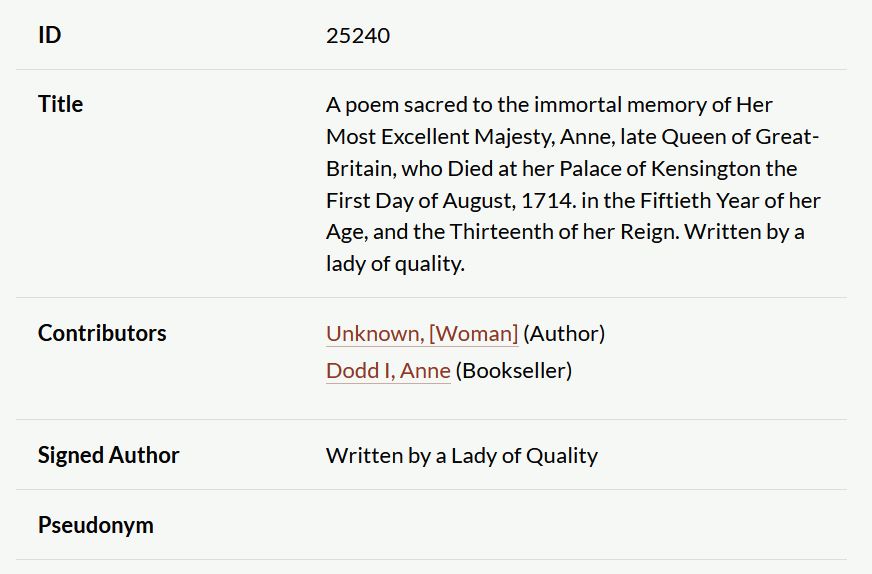This post is part of our By Our Books: Bibliography in the WPHP Spotlight Series, which will run through July 2023. This series attends to the bibliographical fields of the WPHP title records, tracing the history of our thinking about our descriptive practices and how they are informed by the sources available to us and by our feminist ambition to recognize and reconstruct women’s labour in print, broadly conceived.
Authored by: Kate Ozment
Edited by: Michelle Levy and Kandice Sharren
Submitted on: 07/12/2023
Citation: Ozment, Kate. “The Language of Authorship.” The Women’s Print History Project, 12 July 2023, https://womensprinthistoryproject.com/blog/post/123.

Figure 1. Screenshot of WPHP Title ID 25240, A Poem Sacred to the Memory of Her Most Excellent Majesty, Queen Anne, written “by a lady of quality.”
The Signed Author field is unique to the Women’s Print History Project as a space that captures information about author attributions on the title page or other paratextual material including the preface. It can be found below the Contributors field on title records.
An author attribution is used in the copyright sense to signal the person who has the right to claim ownership over a creative work (Book Parts 59–60). However, for most of the long eighteenth century, attribution was more constructed and textual than claiming legal rights that more reliably rested with the publisher than the author until the late 1700s (see Rose, Authors and Owners).
The WPHP is interested less in who has legal access to reproduce an object and more so in how the book presents its attribution textually. This is what the Signed Author field captures. This information is manually added by WPHP editors by copying it from the title page transcription in metadata sources like the English Short Title Catalog or viewing digital surrogates of the documents and looking for signatures in paratext. If no attribution information is included, we put “[Anonymous]” to signal anonymous authorship, with brackets to indicate this is not transcription. Authorship language is captured no matter the level of detail, and this field contains everything from initials to full sentences.
We capture this information in a separate field because it allows for a targeted search for the language of authorship, which is textually constructed in complex and interesting ways. The language of self presentation is distinct from information included as an author in resources like the ESTC or WorldCat, which tend to rely on verified information. Attribution language does not need to signal a concrete person and can instead be quite expansive and rich. Attribution information in the Signed Author field includes relational language that signals family ties and backgrounds, gendered language, such as the ubiquitous “by a lady” (appears in 1,126 records) and attribution chains signaled with “by the author of” (appears in 2,719 records).

Figure 2. Screenshot of WPHP Title ID 11864, The Woman of Colour, a Tale, written “by the author of ‘Light and Shade,’ ‘The Aunt and the Niece,’ and ‘Edersfield Abby,’ &c.”
This field allows users to access a newly created dataset of authorial language in the long eighteenth-century with a special emphasis on attributions that are gendered feminine–as they are more likely to end up in the database. Because it separates this language from the Contributors field, it creates a new pathway for accessing how authorship was textually created rather than legally assigned.
Works Cited
Duncan, Dennis, and Adam Smyth, eds. Book Parts. Oxford UP, 2019.
Rose, Mark. Authors and Owners: The Invention of Copyright. Harvard UP, 1993.
